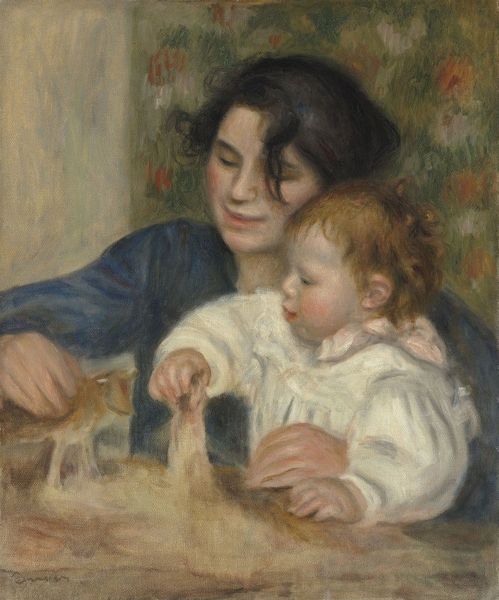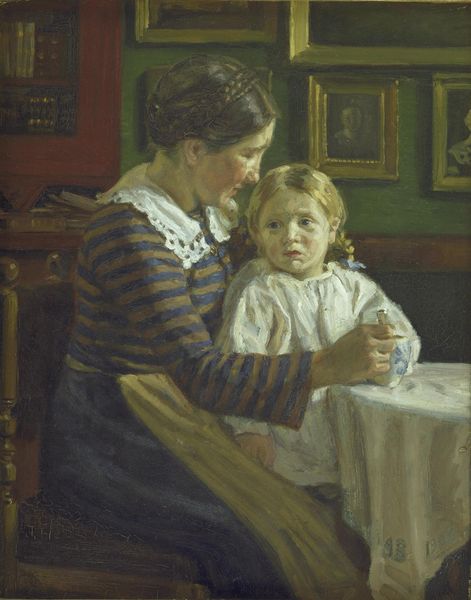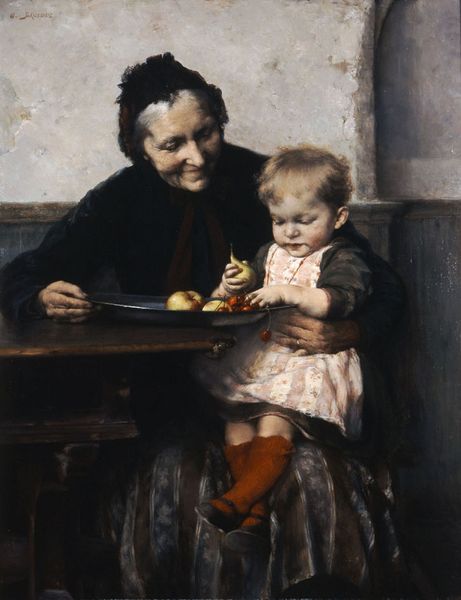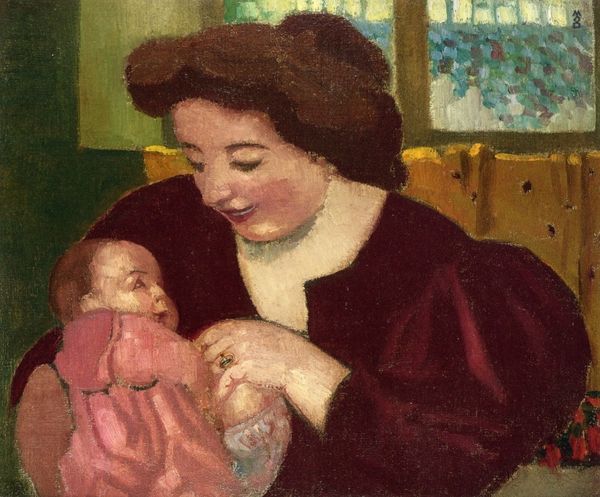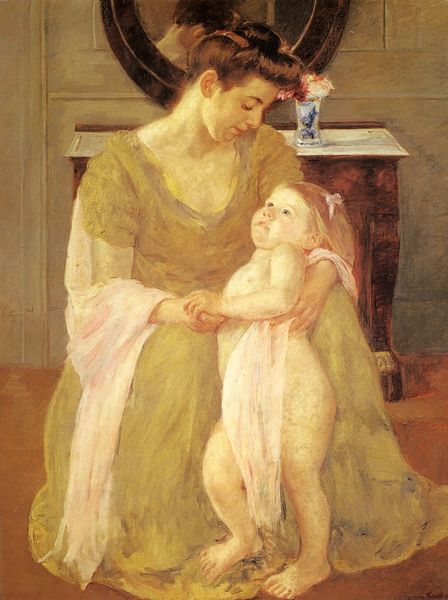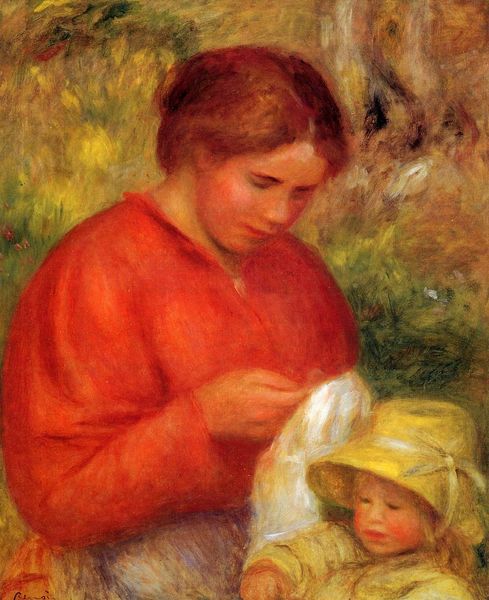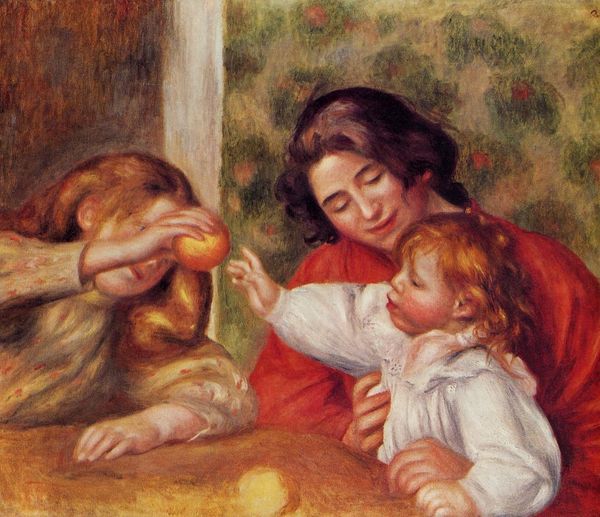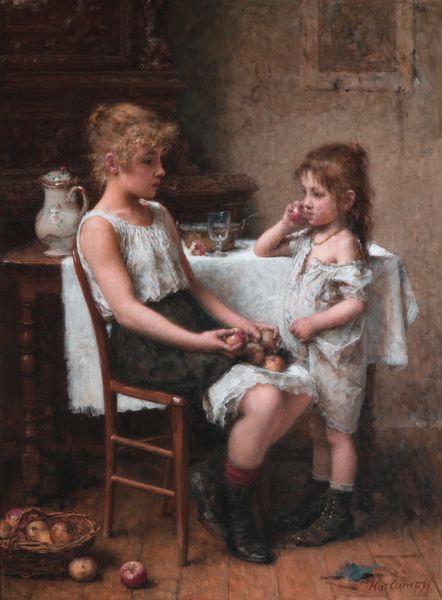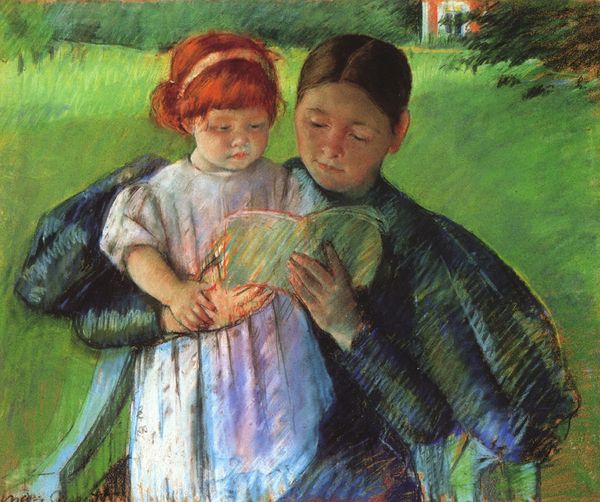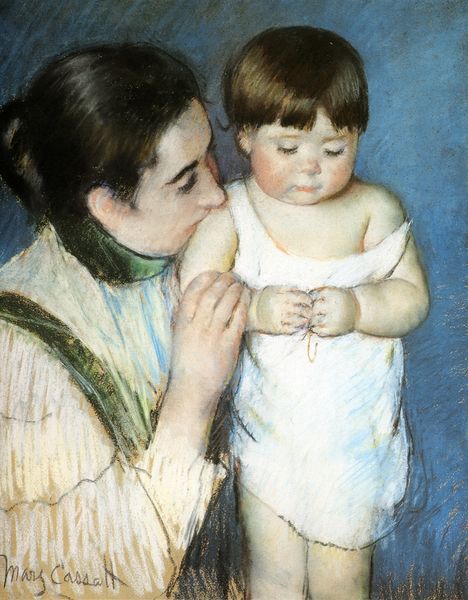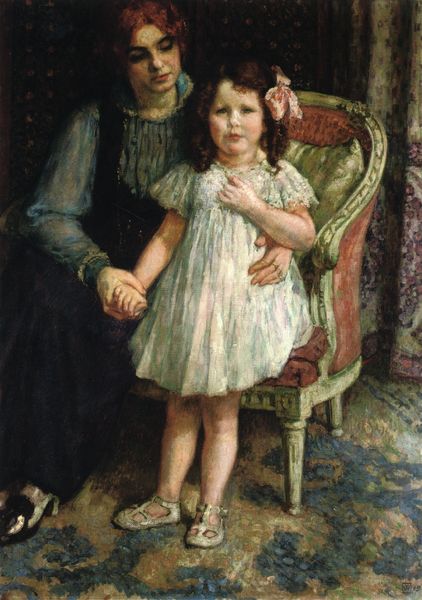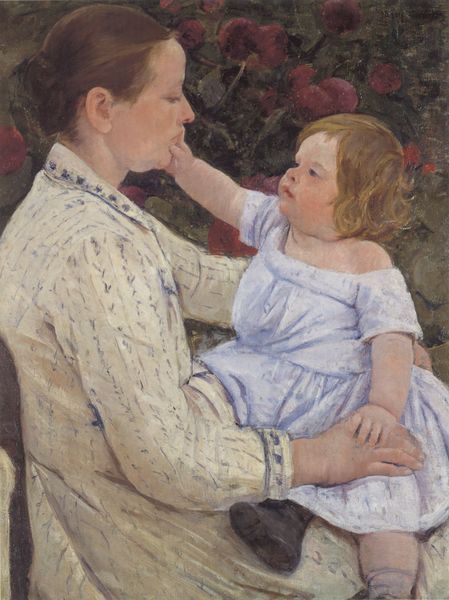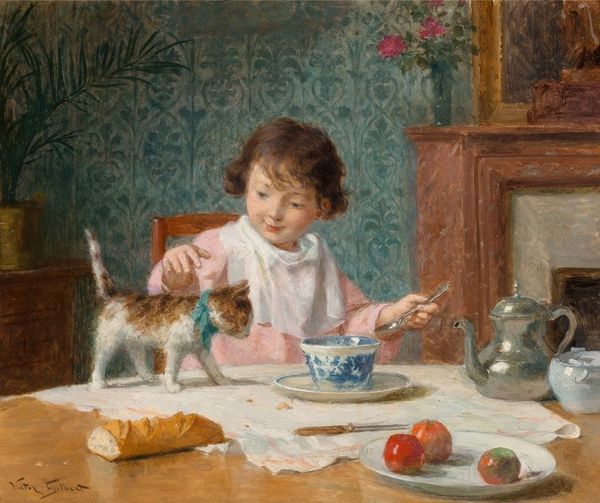
#
figurative
#
portrait
#
portrait reference
#
portrait head and shoulder
#
animal portrait
#
animal drawing portrait
#
portrait drawing
#
facial portrait
#
portrait art
#
fine art portrait
#
digital portrait
Copyright: Public Domain: Artvee
Editor: Here we have Renoir's "Child with Toys – Gabrielle and the Artist’s Son, Jean," painted around 1895 or 1896. It depicts a child playing with toys, accompanied by a woman, probably a nanny or family friend. I am struck by the sheer materiality of the painting: the visible brushstrokes and the way the paint seems almost tactile. What can you tell us about Renoir’s techniques and the context of toy production at the time? Curator: Renoir's broken brushstrokes were meant to capture the transient effects of light. However, I’m most interested in the *things* themselves—the manufactured items within this scene. Notice the construction of the wooden toys; consider them within the growing industrialization of toy production during the late 19th century. Are these toys mass-produced, or are they crafted by hand? What do the materials of the toys tell us about childhood at this time and its increasing entanglement with burgeoning consumer culture? Editor: That's interesting! I hadn't thought about the toys themselves as commodities, but now that you mention it, I see how they reflect broader social trends. Is Renoir commenting on this shift, or simply capturing a domestic scene? Curator: It’s not so simple, is it? Renoir comes from a family of artisans and worked for many years as a porcelain painter; perhaps his appreciation for these everyday materials and labor is a quiet acknowledgement of that. Instead of fixating on an intentional authorial ‘comment,’ we can consider how this painting reflects the increasingly intertwined relationships between the art world and the commercial sphere of the era. What stories might these seemingly simple toys tell us about the relationship between childhood and consumerism at the turn of the century? Editor: I hadn't considered Renoir’s early profession, and it sheds a new light on his subject here. Now I can understand the significance behind the arrangement and the toys depicted. Curator: Exactly. By closely observing the objects depicted and the process behind this painting, we move beyond the surface-level representation and confront the deeper material conditions that shape both the artwork and the world it depicts.
Comments
No comments
Be the first to comment and join the conversation on the ultimate creative platform.
